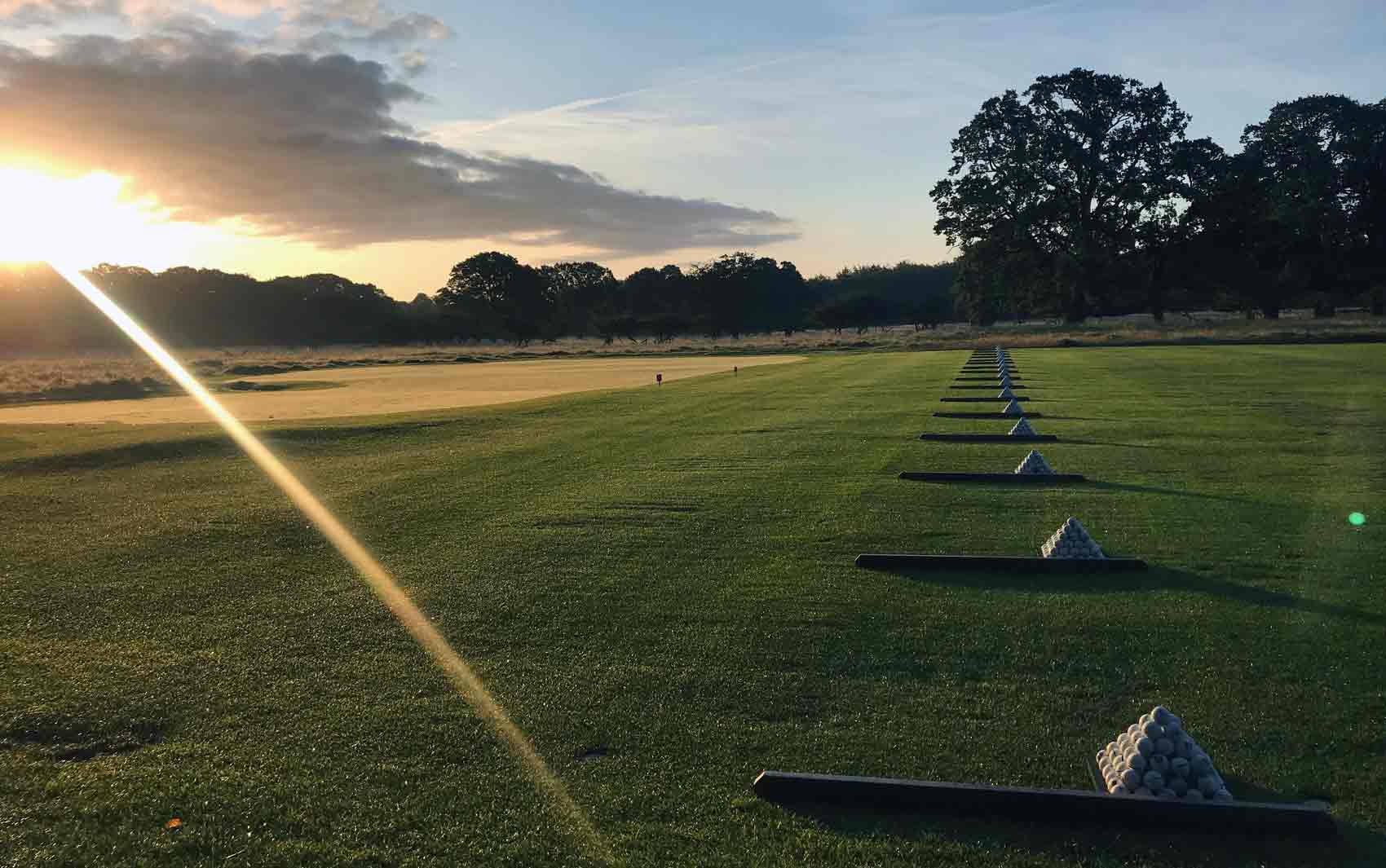Just as quietly, the intensity of care on the course is dropping as the grass growth slows down. Instead, the focus is on worm castings, leaf blowing, winterizing the greens and repairs to bunkers and other damaged areas. These are boring things, but the course is certainly still fully playable and the greens in particular are in good shape.
The putting green at the clubhouse has been closed to play as of September 27th. As one of the weakest greens on the course, it will be given a break from now on.
We will be playing with rental improvement on closely mowed areas from September 28. See notices in the hall or at the information board at the exit to the first tee.
Next week (40) we will probably complete the last reseeding of fairways of the year.
After the reseeding is complete, the fairway markings will be raised. Over the years, they have ended up being a little too deep. This is now being corrected.
We start our annual bunker renovation in October and this work continues until the Christmas holidays and resumes in the new year. Every year between 10 and 15 bunkers are renovated. This year we have a lot of small damage to many bunkers. These are small damages from last year and this year's winter that have not healed during the growing season. These damages are either fixed with a piece of peat or with small lumps of putty consisting of sand, mulch (a cellulose product) and grass seed.
As always, there is a sharp focus on the care of our greens during the off-season. The club is not allowed to use fungicides like conventional golf clubs do. Therefore, we must focus on other methods that ensure health while maintaining the quality of the game. A video has been made about how we care for our greens during the off-season. It was produced by one of our greenkeeper schools with support from the Danish Environmental Protection Agency and DGU. The video can be viewed by clicking on the link here:
https://www.youtube.com/watch?v=7gNH8_Llo5o
Our care methods and our challenges are also interesting outside the country's borders. The situation in many countries can be described as panicky as the use of pesticides is phasing out. We are many years ahead in Dyrehaven and our care efforts and strategy give many foreigners a picture of what can, or will, be an acceptable standard for the future. Autumn, like other years, is therefore the beginning of visits from greenkeepers, course committees and researchers from other countries. We are happy to receive them because only by sharing knowledge and experience can we improve our course care without the use of chemicals. In October, the club will be visited by a group of Dutch greenkeepers and later this month greenkeepers from Goodwood in England will follow, who themselves are getting into trouble due to a lack of fungicides. In November, a visit will follow from the sport's parent organization, the R&A.
As previously described, we are entering a time of little or no grass growth. This means that it is even more important that you correct impact marks and lay turf back in divots on fairways and semi-roughs. Tubes of sand and seed are still being placed on selected tees and it helps significantly when you use these. “Keep up the good work”

